2022届高三英语二轮复习:概要写作课件(27张)
文档属性
| 名称 | 2022届高三英语二轮复习:概要写作课件(27张) |  | |
| 格式 | zip | ||
| 文件大小 | 650.1KB | ||
| 资源类型 | 教案 | ||
| 版本资源 | 通用版 | ||
| 科目 | 英语 | ||
| 更新时间 | 2022-04-28 11:42:48 | ||
图片预览

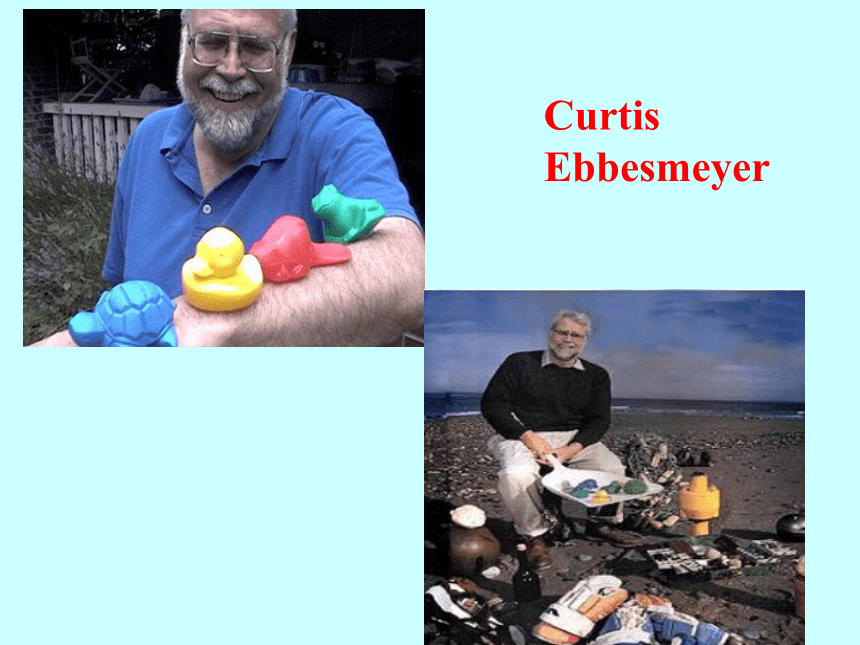
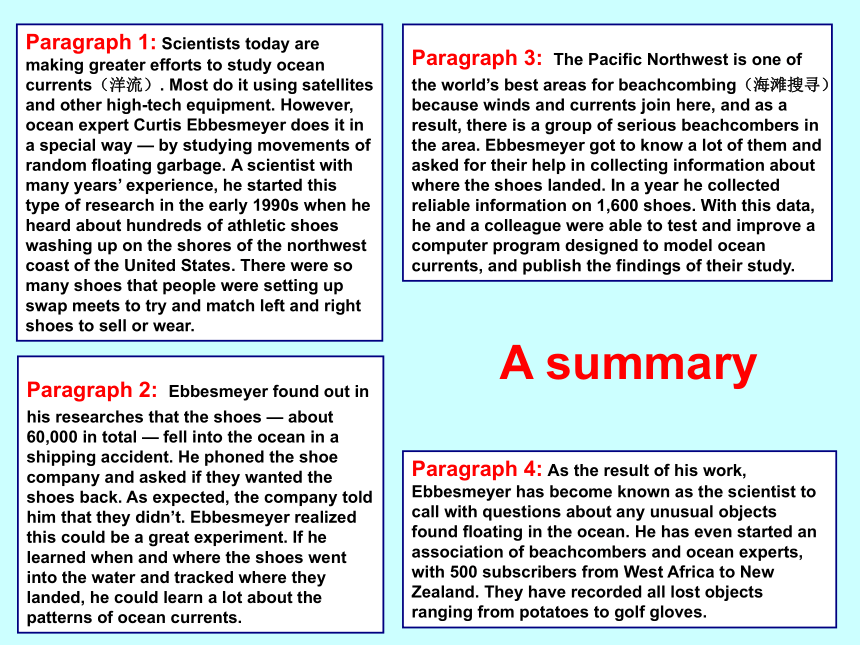
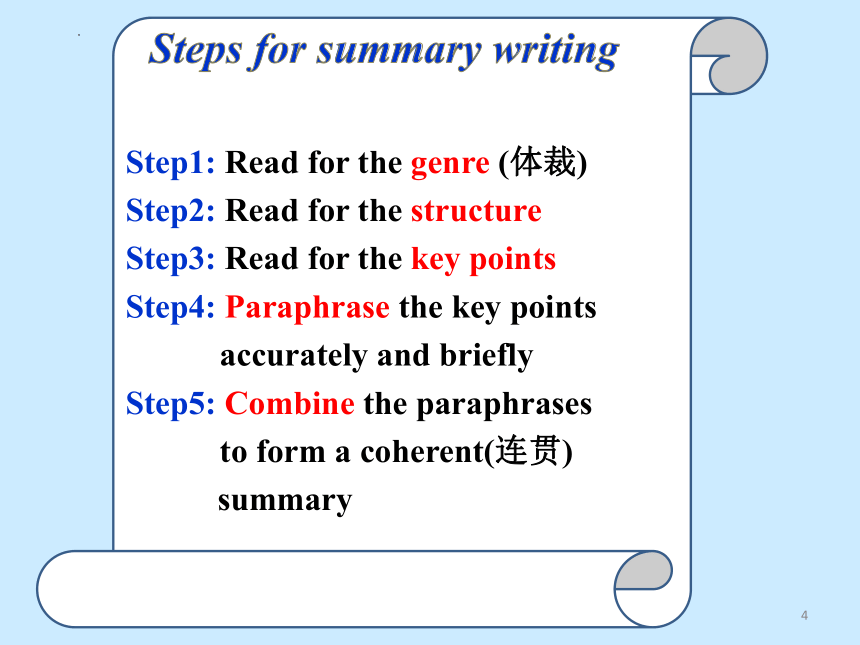
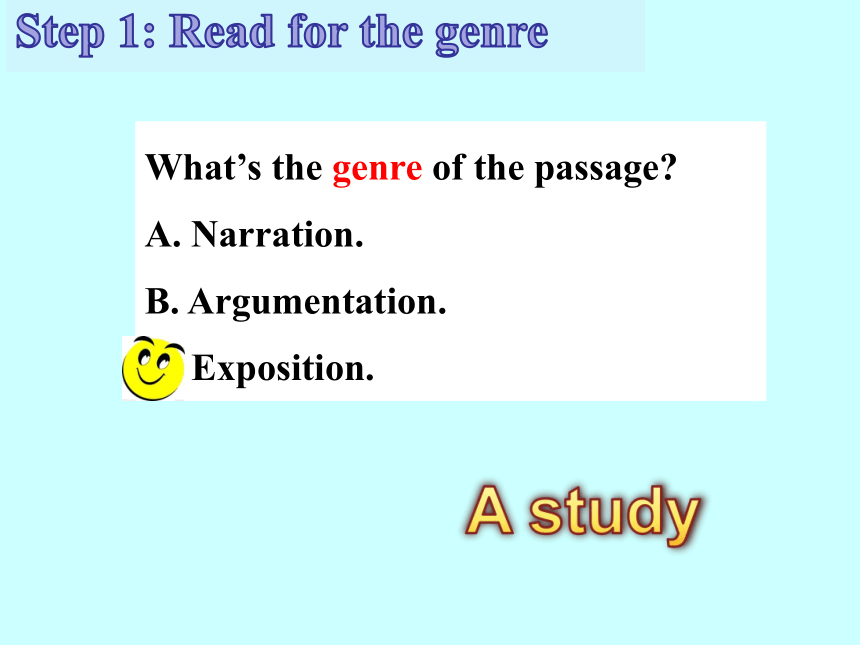
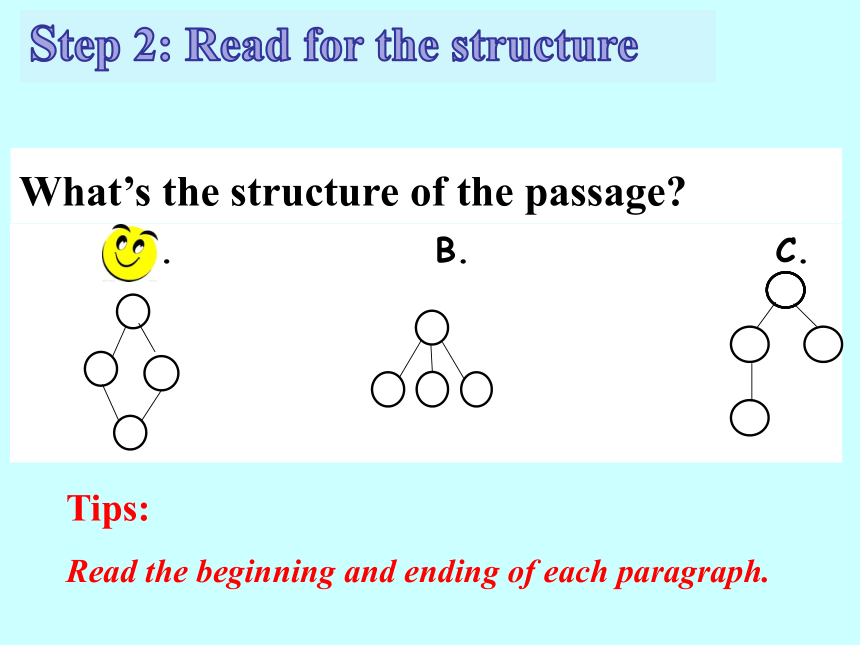
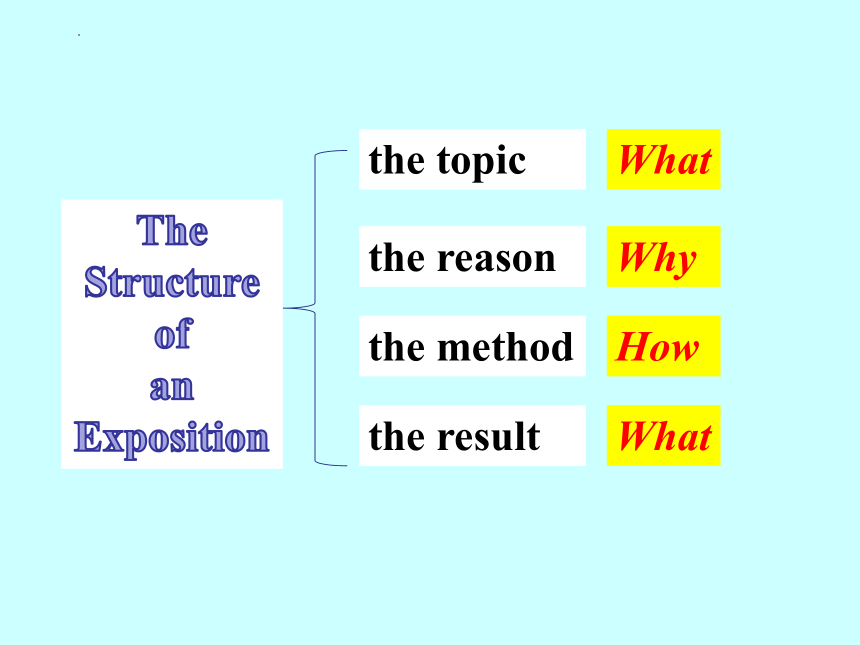
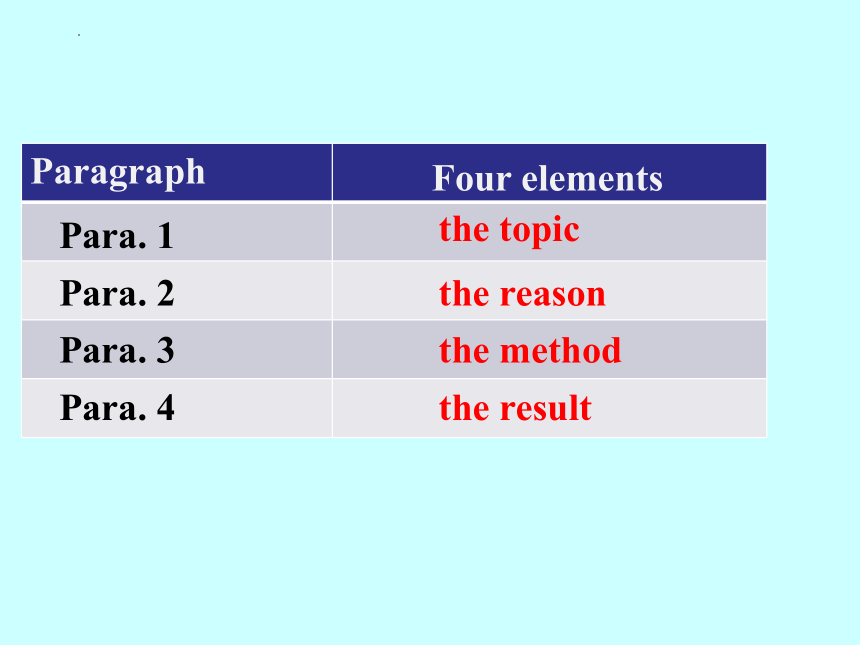
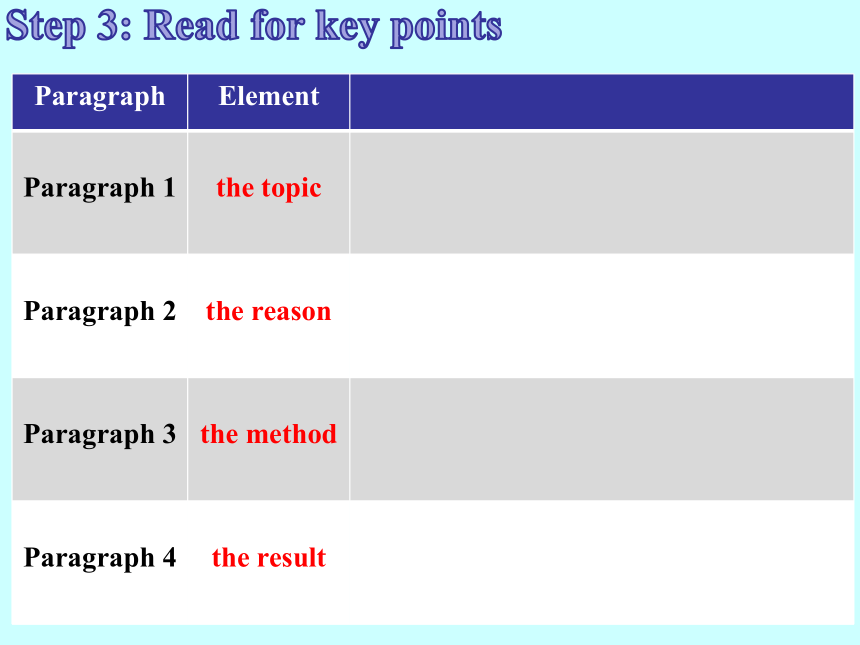
文档简介
(共27张PPT)
Curtis Ebbesmeyer
Paragraph 1: Scientists today are making greater efforts to study ocean currents(洋流). Most do it using satellites and other high-tech equipment. However, ocean expert Curtis Ebbesmeyer does it in a special way — by studying movements of random floating garbage. A scientist with many years’ experience, he started this type of research in the early 1990s when he heard about hundreds of athletic shoes washing up on the shores of the northwest coast of the United States. There were so many shoes that people were setting up swap meets to try and match left and right shoes to sell or wear.
Paragraph 2: Ebbesmeyer found out in his researches that the shoes — about 60,000 in total — fell into the ocean in a shipping accident. He phoned the shoe company and asked if they wanted the shoes back. As expected, the company told him that they didn’t. Ebbesmeyer realized this could be a great experiment. If he learned when and where the shoes went into the water and tracked where they landed, he could learn a lot about the patterns of ocean currents.
Paragraph 3: The Pacific Northwest is one of the world’s best areas for beachcombing(海滩搜寻)because winds and currents join here, and as a result, there is a group of serious beachcombers in the area. Ebbesmeyer got to know a lot of them and asked for their help in collecting information about where the shoes landed. In a year he collected reliable information on 1,600 shoes. With this data, he and a colleague were able to test and improve a computer program designed to model ocean currents, and publish the findings of their study.
Paragraph 4: As the result of his work, Ebbesmeyer has become known as the scientist to call with questions about any unusual objects found floating in the ocean. He has even started an association of beachcombers and ocean experts, with 500 subscribers from West Africa to New Zealand. They have recorded all lost objects ranging from potatoes to golf gloves.
A summary
Yuhang No.2 High School
Step1: Read for the genre (体裁)
Step2: Read for the structure
Step3: Read for the key points
Step4: Paraphrase the key points accurately and briefly
Step5: Combine the paraphrases to form a coherent(连贯)
summary
Steps for summary writing
4
What’s the genre of the passage
Narration.
Argumentation.
Exposition.
Step 1: Read for the genre
A study
Step 2: Read for the structure
A. B. C.
What’s the structure of the passage
Tips:
Read the beginning and ending of each paragraph.
the topic
the reason
the method
the result
The Structure of
an Exposition
What
Why
How
What
the topic
Paragraph
Para. 1
Para. 2
Para. 3
Para. 4
Four elements
the reason
the method
the result
Paragraph Element
Paragraph 1 the topic
Paragraph 2 the reason
Paragraph 3 the method
Paragraph 4 the result
Step 3: Read for key points
Step 3: Read for key points
Paragraph Element Key points (topic sentence or key words)
Paragraph 1 the topic
Paragraph 2 the reason
Paragraph 3 the method
Paragraph 4 the result
Paragraph Element Key points (topic sentence or key words)
Paragraph 1 the topic
Paragraph 2 the reason
Paragraph 3 the method
Paragraph 4 the result
Paragraph Element Key points (topic sentence or key words)
Paragraph 1 the topic Ocean expert Curtis Ebbesmeyer studies ocean currents in a special way—by studying movements of random floating garbage.
Paragraph 2 the reason
Paragraph 3 the method
Paragraph 4 the result
Paragraph Element Key points (topic sentence or key words)
Paragraph 1 the topic Ocean expert Curtis Ebbesmeyer studies ocean currents in a special way—by studying movements of random floating garbage.
Paragraph 2 the reason If he learned when and where the shoes went into the water and tracked where they landed, he could learn a lot about the patterns of ocean currents.
Paragraph 3 the method
Paragraph 4 the result
Paragraph Element Key points (topic sentence or key words)
Paragraph 1 the topic Ocean expert Curtis Ebbesmeyer studies ocean currents in a special way—by studying movements of random floating garbage.
Paragraph 2 the reason If he learned when and where the shoes went into the water and tracked where they landed, he could learn a lot about the patterns of ocean currents.
Paragraph 3 the method
Paragraph 4 the result
Paragraph Element Key points (topic sentence or key words)
Paragraph 1 the topic Ocean expert Curtis Ebbesmeyer studies ocean currents in a special way—by studying movements of random floating garbage.
Paragraph 2 the reason If he learned when and where the shoes went into the water and tracked where they landed, he could learn a lot about the patterns of ocean currents.
Paragraph 3 the method 1. ...asked for beachcombers' help in collecting information about ...
Paragraph 4 the result
Paragraph Element Key points (topic sentence or key words)
Paragraph 1 the topic Ocean expert Curtis Ebbesmeyer studies ocean currents in a special way—by studying movements of random floating garbage.
Paragraph 2 the reason If he learned when and where the shoes went into the water and tracked where they landed, he could learn a lot about the patterns of ocean currents.
Paragraph 3 the method 1. ...asked for beachcombers' help in collecting information about ...
2. ...to test and improve a computer program designed to model ocean currents...
Paragraph 4 the result
Paragraph Element Key points (topic sentence or key words)
Paragraph 1 the topic Ocean expert Curtis Ebbesmeyer studies ocean currents in a special way—by studying movements of random floating garbage.
Paragraph 2 the reason If he learned when and where the shoes went into the water and tracked where they landed, he could learn a lot about the patterns of ocean currents.
Paragraph 3 the method 1. ...asked for beachcombers' help in collecting information about ...
2. ...to test and improve a computer program designed to model ocean currents...
Paragraph 4 the result ...has become known as the scientist to call with questions about any unusual objects found floating in the ocean.
Paragraph Element Key points (topic sentence or key words)
Paragraph 1 the topic Ocean expert Curtis Ebbesmeyer studies ocean currents in a special way—by studying movements of random floating garbage.
Paragraph 2 the reason If he learned when and where the shoes went into the water and tracked where they landed, he could learn a lot about the patterns of ocean currents.
Paragraph 3 the method 1. ...asked for beachcombers' help in collecting information about ...
2. ...to test and improve a computer program designed to model ocean currents...
Paragraph 4 the result ...has become known as the scientist to call with questions about any unusual objects found floating in the ocean.
Step4: Paraphrase the key points
Yuhang No.2 High School
Tip1: Simplify them.
Tip2: Change them.
Change the part of speech
Change the order of words
Use similar words
Tip3: Generalize them.
How to be accurate and brief
19
Ocean expert Curtis Ebbesmeyer studies ocean currents in a special way.
Ocean expert Curtis Ebbesmeyer studies ocean currents in a special way—by studying movements of random floating garbage.
Simplify it.
in …way 用…方法
use / adopt / employ
different / new / unusual / unique
way
采用;使用(…方法)
special
method / approach
Curtis Ebbesmeyer, an ocean expert, uses a new method to study ocean currents.
Change it.
Ocean expert Curtis Ebbesmeyer studies ocean currents in a special way.
Paragraph Element Key points (topic sentence or key words)
Paragraph 1 the topic Curtis Ebbesmeyer, an ocean expert, uses a new method to study ocean currents.
Paragraph 2 the reason If he learned when and where the shoes went into the water and tracked where they landed, he could learn a lot about the patterns of ocean currents.
Paragraph 3 the method 1. ...asked for beachcombers' help in collecting information about ...
2. ...to test and improve a computer program designed to model ocean currents...
Paragraph 4 the result ...has become known as the scientist to call with questions about any unusual objects found floating in the ocean.
Step4: Paraphrase the key points
Paragraph Element Paraphrases
Paragraph 1 the topic Curtis Ebbesmeyer, an ocean expert, uses a new method to study ocean currents.
Paragraph 2 the reason He found studying the routes of floating shoes could help him learn much about the patterns of ocean currents.
Paragraph 3 the method He turned to beachcombers for help and gathered convincing data to make a better model for ocean currents.
Paragraph 4 the result .He has become a famous expert in this type of research.
Step 5: Combine the paraphrases
Para.1: Curtis Ebbesmeyer, an ocean expert, uses a new method to study ocean currents.
Para.2: He found studying the routes of floating shoes could help him learn much about the patterns of ocean currents.
Para.3: He turned to beachcombers for help and gathered convincing data to make a better
model for ocean currents.
Para.4: He has become a famous expert in this type of research.
How to be coherent
conjunction words
Curtis Ebbesmeyer, an ocean expert, uses a new method to study ocean currents. He found studying the routes of floating shoes could help him learn much about the patterns of ocean currents. To achieve the goal, he turned to beachcombers for help and gathered convincing data to make a better model for ocean currents. As a result, he has become a famous expert in this type of research.
Curtis Ebbesmeyer, an ocean expert, uses a new method to study ocean currents. (要点1) He found studying the routes of floating shoes could help him learn much about the patterns of ocean currents. (要点2) To achieve the goal, he turned to beachcombers for help and gathered convincing data to make a better model for ocean currents. (要点3) As a result, he has become a famous expert in this type of research. (要点4) (67 words)
One possible version:
the topic
the reason
the method
the result
★ Polish your summary writing after class.
Homework
Curtis Ebbesmeyer
Paragraph 1: Scientists today are making greater efforts to study ocean currents(洋流). Most do it using satellites and other high-tech equipment. However, ocean expert Curtis Ebbesmeyer does it in a special way — by studying movements of random floating garbage. A scientist with many years’ experience, he started this type of research in the early 1990s when he heard about hundreds of athletic shoes washing up on the shores of the northwest coast of the United States. There were so many shoes that people were setting up swap meets to try and match left and right shoes to sell or wear.
Paragraph 2: Ebbesmeyer found out in his researches that the shoes — about 60,000 in total — fell into the ocean in a shipping accident. He phoned the shoe company and asked if they wanted the shoes back. As expected, the company told him that they didn’t. Ebbesmeyer realized this could be a great experiment. If he learned when and where the shoes went into the water and tracked where they landed, he could learn a lot about the patterns of ocean currents.
Paragraph 3: The Pacific Northwest is one of the world’s best areas for beachcombing(海滩搜寻)because winds and currents join here, and as a result, there is a group of serious beachcombers in the area. Ebbesmeyer got to know a lot of them and asked for their help in collecting information about where the shoes landed. In a year he collected reliable information on 1,600 shoes. With this data, he and a colleague were able to test and improve a computer program designed to model ocean currents, and publish the findings of their study.
Paragraph 4: As the result of his work, Ebbesmeyer has become known as the scientist to call with questions about any unusual objects found floating in the ocean. He has even started an association of beachcombers and ocean experts, with 500 subscribers from West Africa to New Zealand. They have recorded all lost objects ranging from potatoes to golf gloves.
A summary
Yuhang No.2 High School
Step1: Read for the genre (体裁)
Step2: Read for the structure
Step3: Read for the key points
Step4: Paraphrase the key points accurately and briefly
Step5: Combine the paraphrases to form a coherent(连贯)
summary
Steps for summary writing
4
What’s the genre of the passage
Narration.
Argumentation.
Exposition.
Step 1: Read for the genre
A study
Step 2: Read for the structure
A. B. C.
What’s the structure of the passage
Tips:
Read the beginning and ending of each paragraph.
the topic
the reason
the method
the result
The Structure of
an Exposition
What
Why
How
What
the topic
Paragraph
Para. 1
Para. 2
Para. 3
Para. 4
Four elements
the reason
the method
the result
Paragraph Element
Paragraph 1 the topic
Paragraph 2 the reason
Paragraph 3 the method
Paragraph 4 the result
Step 3: Read for key points
Step 3: Read for key points
Paragraph Element Key points (topic sentence or key words)
Paragraph 1 the topic
Paragraph 2 the reason
Paragraph 3 the method
Paragraph 4 the result
Paragraph Element Key points (topic sentence or key words)
Paragraph 1 the topic
Paragraph 2 the reason
Paragraph 3 the method
Paragraph 4 the result
Paragraph Element Key points (topic sentence or key words)
Paragraph 1 the topic Ocean expert Curtis Ebbesmeyer studies ocean currents in a special way—by studying movements of random floating garbage.
Paragraph 2 the reason
Paragraph 3 the method
Paragraph 4 the result
Paragraph Element Key points (topic sentence or key words)
Paragraph 1 the topic Ocean expert Curtis Ebbesmeyer studies ocean currents in a special way—by studying movements of random floating garbage.
Paragraph 2 the reason If he learned when and where the shoes went into the water and tracked where they landed, he could learn a lot about the patterns of ocean currents.
Paragraph 3 the method
Paragraph 4 the result
Paragraph Element Key points (topic sentence or key words)
Paragraph 1 the topic Ocean expert Curtis Ebbesmeyer studies ocean currents in a special way—by studying movements of random floating garbage.
Paragraph 2 the reason If he learned when and where the shoes went into the water and tracked where they landed, he could learn a lot about the patterns of ocean currents.
Paragraph 3 the method
Paragraph 4 the result
Paragraph Element Key points (topic sentence or key words)
Paragraph 1 the topic Ocean expert Curtis Ebbesmeyer studies ocean currents in a special way—by studying movements of random floating garbage.
Paragraph 2 the reason If he learned when and where the shoes went into the water and tracked where they landed, he could learn a lot about the patterns of ocean currents.
Paragraph 3 the method 1. ...asked for beachcombers' help in collecting information about ...
Paragraph 4 the result
Paragraph Element Key points (topic sentence or key words)
Paragraph 1 the topic Ocean expert Curtis Ebbesmeyer studies ocean currents in a special way—by studying movements of random floating garbage.
Paragraph 2 the reason If he learned when and where the shoes went into the water and tracked where they landed, he could learn a lot about the patterns of ocean currents.
Paragraph 3 the method 1. ...asked for beachcombers' help in collecting information about ...
2. ...to test and improve a computer program designed to model ocean currents...
Paragraph 4 the result
Paragraph Element Key points (topic sentence or key words)
Paragraph 1 the topic Ocean expert Curtis Ebbesmeyer studies ocean currents in a special way—by studying movements of random floating garbage.
Paragraph 2 the reason If he learned when and where the shoes went into the water and tracked where they landed, he could learn a lot about the patterns of ocean currents.
Paragraph 3 the method 1. ...asked for beachcombers' help in collecting information about ...
2. ...to test and improve a computer program designed to model ocean currents...
Paragraph 4 the result ...has become known as the scientist to call with questions about any unusual objects found floating in the ocean.
Paragraph Element Key points (topic sentence or key words)
Paragraph 1 the topic Ocean expert Curtis Ebbesmeyer studies ocean currents in a special way—by studying movements of random floating garbage.
Paragraph 2 the reason If he learned when and where the shoes went into the water and tracked where they landed, he could learn a lot about the patterns of ocean currents.
Paragraph 3 the method 1. ...asked for beachcombers' help in collecting information about ...
2. ...to test and improve a computer program designed to model ocean currents...
Paragraph 4 the result ...has become known as the scientist to call with questions about any unusual objects found floating in the ocean.
Step4: Paraphrase the key points
Yuhang No.2 High School
Tip1: Simplify them.
Tip2: Change them.
Change the part of speech
Change the order of words
Use similar words
Tip3: Generalize them.
How to be accurate and brief
19
Ocean expert Curtis Ebbesmeyer studies ocean currents in a special way.
Ocean expert Curtis Ebbesmeyer studies ocean currents in a special way—by studying movements of random floating garbage.
Simplify it.
in …way 用…方法
use / adopt / employ
different / new / unusual / unique
way
采用;使用(…方法)
special
method / approach
Curtis Ebbesmeyer, an ocean expert, uses a new method to study ocean currents.
Change it.
Ocean expert Curtis Ebbesmeyer studies ocean currents in a special way.
Paragraph Element Key points (topic sentence or key words)
Paragraph 1 the topic Curtis Ebbesmeyer, an ocean expert, uses a new method to study ocean currents.
Paragraph 2 the reason If he learned when and where the shoes went into the water and tracked where they landed, he could learn a lot about the patterns of ocean currents.
Paragraph 3 the method 1. ...asked for beachcombers' help in collecting information about ...
2. ...to test and improve a computer program designed to model ocean currents...
Paragraph 4 the result ...has become known as the scientist to call with questions about any unusual objects found floating in the ocean.
Step4: Paraphrase the key points
Paragraph Element Paraphrases
Paragraph 1 the topic Curtis Ebbesmeyer, an ocean expert, uses a new method to study ocean currents.
Paragraph 2 the reason He found studying the routes of floating shoes could help him learn much about the patterns of ocean currents.
Paragraph 3 the method He turned to beachcombers for help and gathered convincing data to make a better model for ocean currents.
Paragraph 4 the result .He has become a famous expert in this type of research.
Step 5: Combine the paraphrases
Para.1: Curtis Ebbesmeyer, an ocean expert, uses a new method to study ocean currents.
Para.2: He found studying the routes of floating shoes could help him learn much about the patterns of ocean currents.
Para.3: He turned to beachcombers for help and gathered convincing data to make a better
model for ocean currents.
Para.4: He has become a famous expert in this type of research.
How to be coherent
conjunction words
Curtis Ebbesmeyer, an ocean expert, uses a new method to study ocean currents. He found studying the routes of floating shoes could help him learn much about the patterns of ocean currents. To achieve the goal, he turned to beachcombers for help and gathered convincing data to make a better model for ocean currents. As a result, he has become a famous expert in this type of research.
Curtis Ebbesmeyer, an ocean expert, uses a new method to study ocean currents. (要点1) He found studying the routes of floating shoes could help him learn much about the patterns of ocean currents. (要点2) To achieve the goal, he turned to beachcombers for help and gathered convincing data to make a better model for ocean currents. (要点3) As a result, he has become a famous expert in this type of research. (要点4) (67 words)
One possible version:
the topic
the reason
the method
the result
★ Polish your summary writing after class.
Homework
